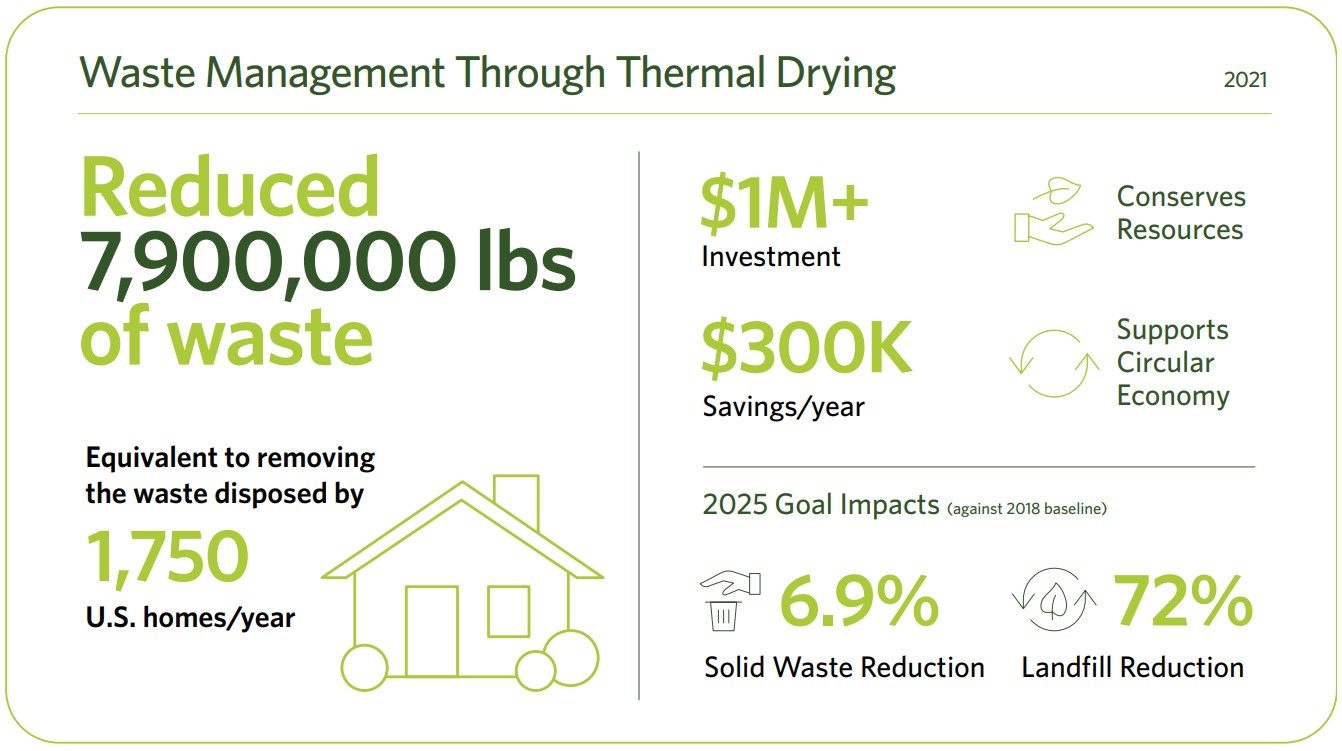Thermal Drying Reduces Waste
- About Us
-
Businesses
-
Main Menu
- Businesses
- Our Businesses Overview
-
Textile
-
Businesses
- Textile
- Overview
- Markets
- Brands
- Expertise
- Media
- Contact Us
- Chemical
- Flooring
-
Performance Solutions by Milliken
-
Businesses
- Performance Solutions by Milliken
- Overview
- Consulting Services
- Education and Events
- Resources
- Virtual Tour
- Contact Us
- Products
-
Industries
-
Main Menu
- Industries
- Industries Overview
- Agriculture
- Apparel
- Automotive and Transportation
- Building, Construction, and Infrastructure
- Coatings, Paints, and Inks
- Commercial
- Consumer Goods
- Education
- Energy and Utilities
- Government and Defense
- Healthcare and Life Sciences
- Hospitality
- Manufacturing
- Packaging and Print
- Residential
- Sustainability
- Careers
Thermal Drying Reduces Waste
Our engineers designed a way to reduce the amount of biosolids with the help of thermal drying.
Wastewater biosolids, commonly referred to as sludge, are waste from our water treatment processes and require appropriate disposal. We’re always researching new ways of thinking about waste, but we still must deal with sludge. After experiencing a decrease in sustainable disposal outlets in 2019 for our largest waste stream, wastewater biosolids, we committed to exploring management solutions to positively impact our waste reduction goals.
Our engineers designed a way to reduce the amount of biosolids with the help of thermal drying. Thermal drying also reduces the amount of waste transported on public roads to disposal. In 2021, we built our first biosolids dryer. And in 2022, we saw the benefits of a full year of operation, proving that this process can effectively reduce our waste by nearly 8 million pounds per year. We’re looking for ways to incorporate thermal drying at other biosolid generation sites.

